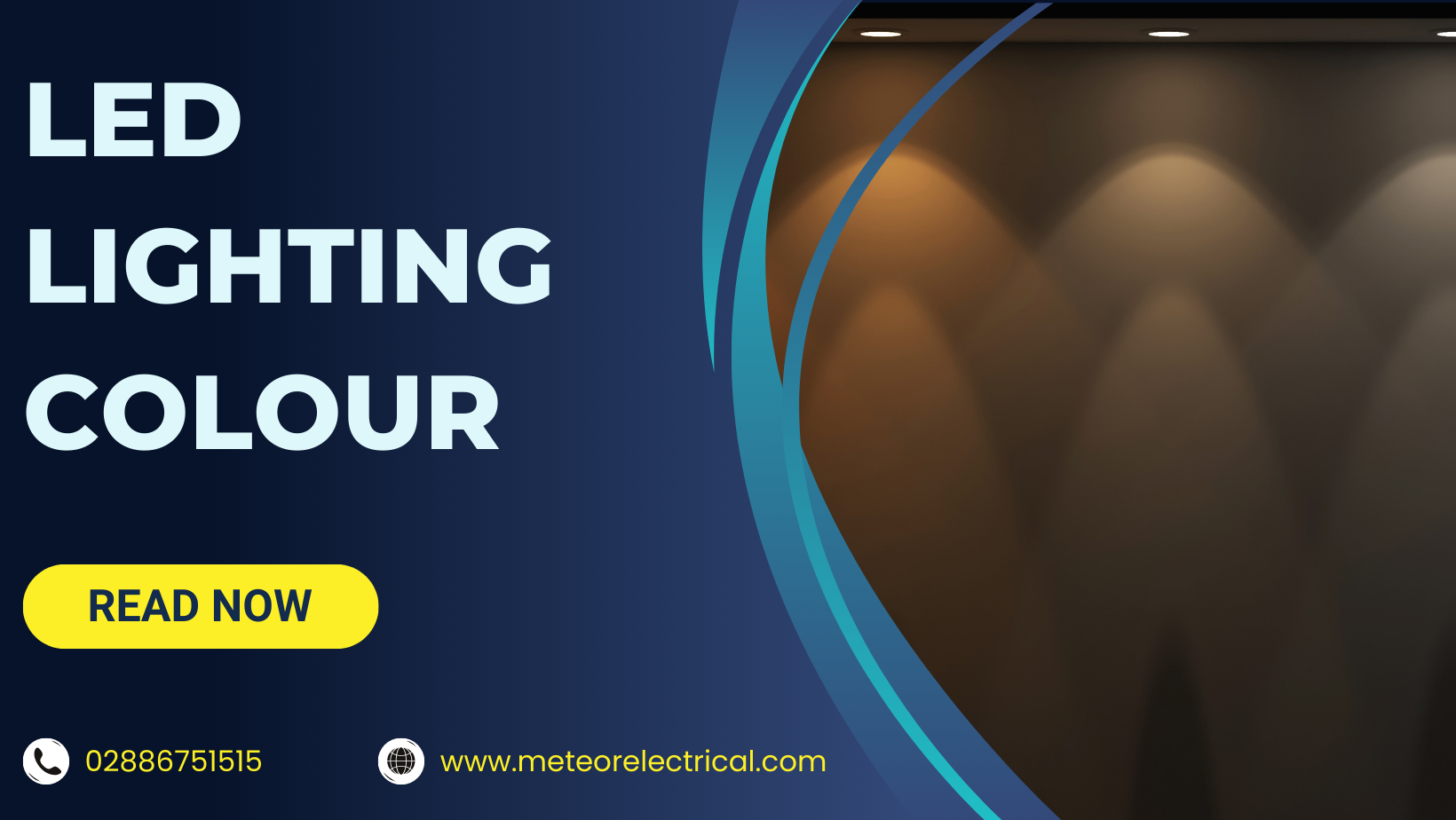LED Lighting: How to Choose the Correct Colour Temperature
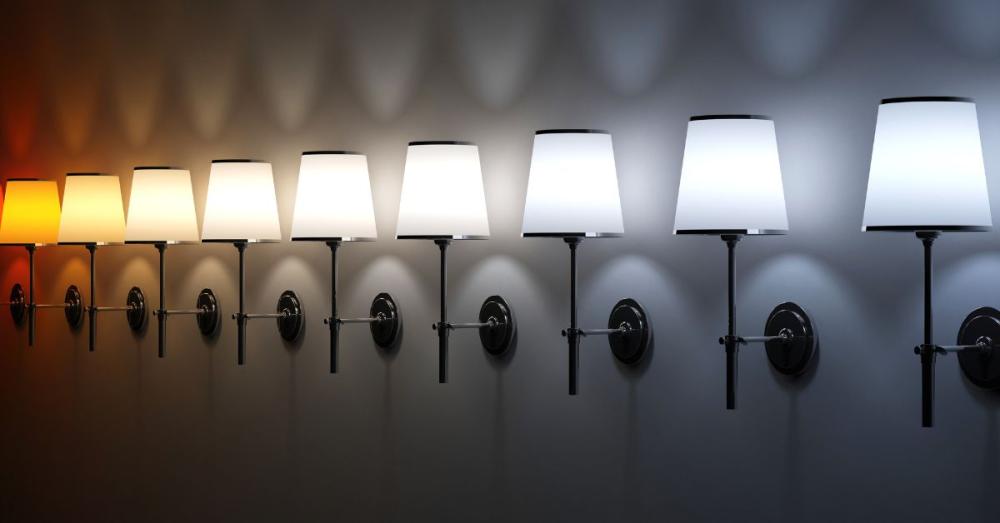
Colour temperature plays a pivotal role in defining the ambiance and functionality of any space. You’ve likely heard phrases like, “this room feels so warm and cosy,” or “this room feels nice and cool.” These moods are largely influenced by the colour temperature you choose for your lighting. But how do you select the right one for your home or office? Let’s dive into the world of LED colour temperatures and explore how Meteor Electrical can help you make the best choice.
Colour temperature is measured in degrees of Kelvin (K), on a scale ranging from 1,000 to 10,000. This scale describes the appearance of the white light emitted by a bulb, transitioning from warm (yellowish) to cool (bluish) tones. Understanding this scale is key to creating the desired atmosphere in any room.
What Colour Temperatures are Available in LED Lights?
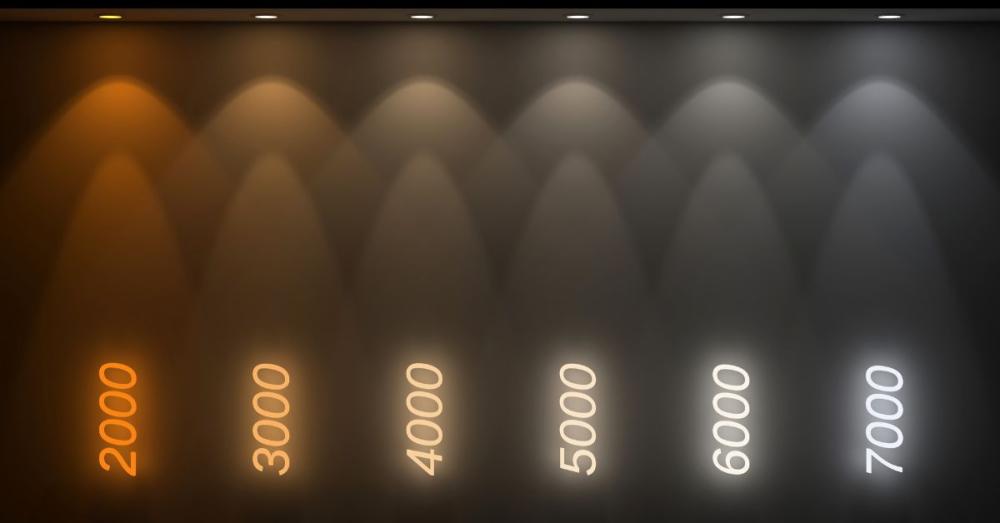
Most LED lights are categorised as either warm white or cool white. The warmer the colour, the lower the Kelvin value, and the cooler the colour, the higher the Kelvin value. For a comprehensive overview, you can refer to the LED Colour Temperature Chart.
The most common colour temperatures for LED fittings include:
- 2700K (Extra Warm White): Similar to traditional incandescent bulbs, offering a cosy, yellowish glow.
- 3000K (Warm White): A clear yet warm light, highly popular for both domestic and commercial settings.
- 4000K (Cool White): Crisp and modern, ideal for workspaces like offices and supermarkets.
- 5000K (Daylight): Mimics natural daylight with a blue tinge, perfect for retail environments.
- 6000K (Cool Daylight): Even cooler, providing a bright, clear light suitable for specific professional settings.
The most sought-after range is between 3000K and 4000K, striking a balance between warmth and brightness, making it versatile for daily activities.
| Colour Temperature (K) | Description | Typical Uses | Examples |
|---|---|---|---|
| 2700K | Extra Warm White | Living rooms, bedrooms, outdoor ambient lighting | Traditional incandescent-like bulbs, Warm White Bulbs |
| 3000K | Warm White | Dining areas, bathrooms, hospitality settings | CCT 16W LED Circular Bulkhead |
| 4000K | Cool White | Kitchens, offices, commercial spaces | Cool White Downlights |
| 5000K | Daylight | Retail environments, workshops, garages | LED Panels |
| 6000K | Cool Daylight | Specialised workspaces, outdoor security lighting | Smart Lighting Solutions |
Colour Changeable Temperature
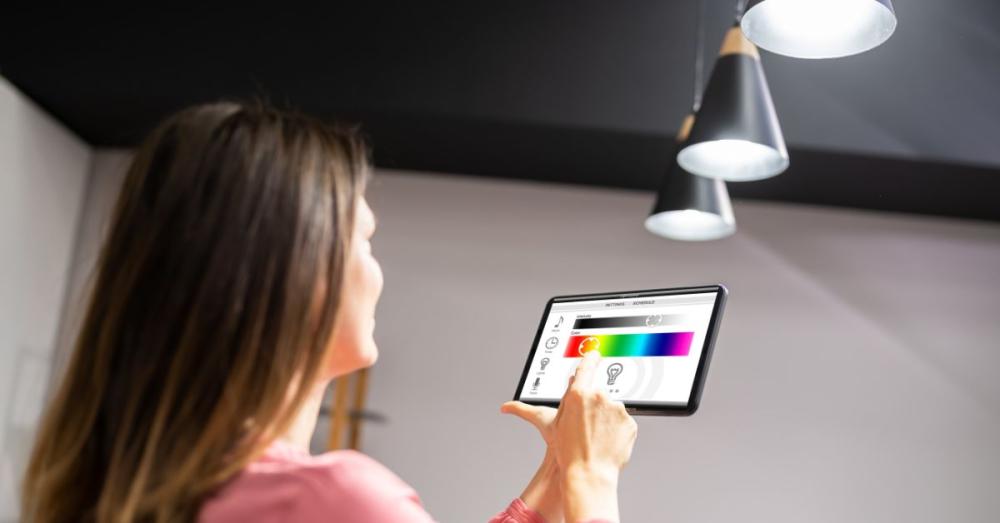
For those seeking flexibility, Colour Changeable Temperature (CCT) LED fittings offer the ability to switch between different colour temperatures. With options like 3000K, 4000K, and 6000K, you can easily adjust the lighting to suit various moods and tasks. For instance, our CCT 16W LED Circular Bulkhead allows you to toggle between these settings effortlessly.
Additionally, smart lighting solutions provide even greater control, enabling you to customise the full spectrum of colours to perfectly match your needs. Explore more about smart lighting options to enhance your space further.
How Do I Know What Colour Temperature My Fittings Are Now?
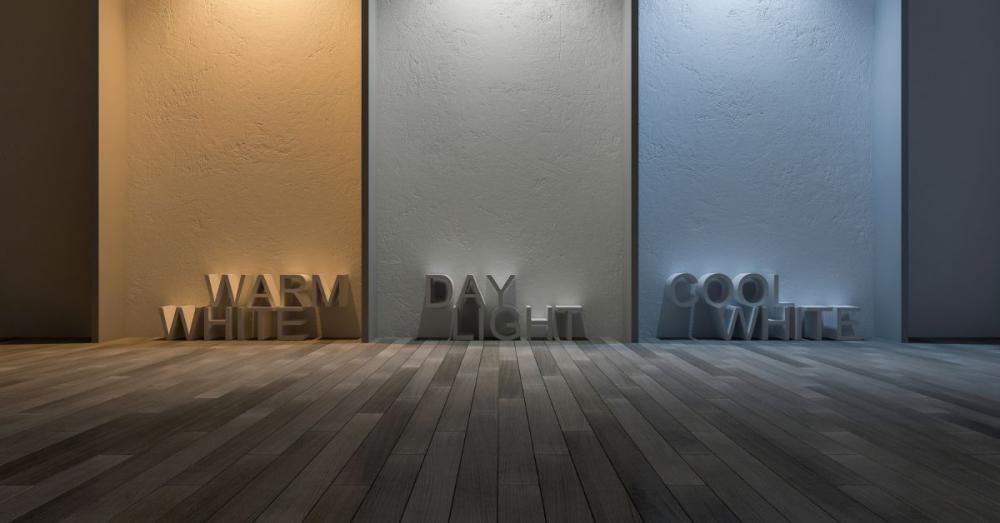
If you’re replacing a burnt-out bulb and want to maintain the same ambience, identifying your current colour temperature is essential. Check the fitting for any printed Kelvin values. If not available, compare the light output with the Lighting Colour Temperature Chart to determine the appropriate replacement.
Standard colour temperatures simplify the replacement process, ensuring consistency in your lighting setup. Here’s a quick reference to help you identify the right temperature:
- 2700K (Extra Warm White): Ideal for creating a traditional, cosy atmosphere with a yellowish glow.
- 3000K (Warm White): Offers a clear yet warm light, perfect for most domestic and commercial applications.
- 4000K (Cool White): Provides a modern, crisp light, suitable for work environments.
- 5000K (Daylight): Emulates natural daylight, enhancing productivity in retail and workplace settings.
Why Does Colour Temperature Matter & How Do I Utilise It?
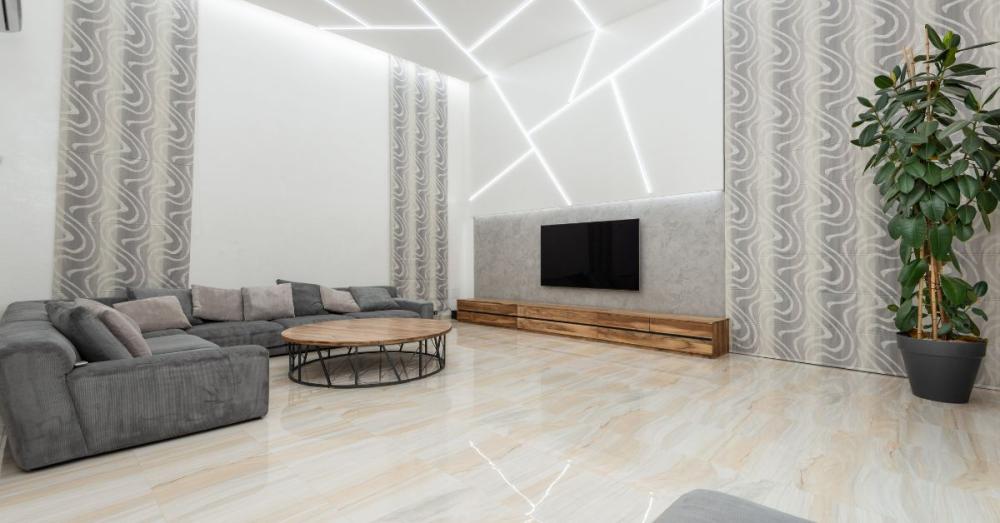
Selecting the correct colour temperature is crucial as it significantly impacts the feel of a room. Here are two key considerations:
- Function of the Room: Is the space meant for relaxation or productivity?
- Desired Atmosphere: Do you want the room to feel homely and relaxed or bright and focused?
Warm white colours (2700K-3000K) are more relaxing and inviting, making them ideal for living rooms and bedrooms. Cool white colours (4000K-5000K) enhance concentration and are perfect for kitchens, offices, and commercial spaces.
Imagine stepping into a cosy living room bathed in warm white light, instantly making you feel relaxed. In contrast, a kitchen illuminated with cool white light provides clarity and focus, perfect for meal preparation. Understanding these nuances allows you to tailor your lighting to your specific needs.
Credit: Arrow Electrical
Colour Temperature Recommendations for Different Environments
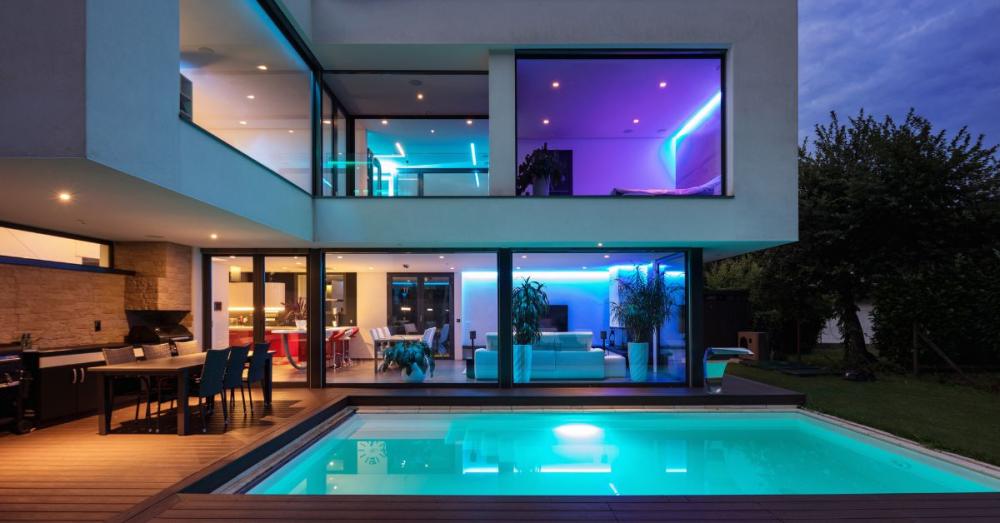
Kitchens:
Kitchens are bustling workspaces where functionality is paramount. A cool white temperature (4000K) offers bright, clear light that enhances visibility and safety during food preparation. Check out our Cool White Downlights for a modern and efficient lighting solution or cool white bulbs.
Bathrooms:
Balancing functionality and ambience in bathrooms can be tricky. Warm white colours (2700K-3000K) create a relaxing environment for baths, while cool white temperatures (4000K) are better for tasks like shaving or makeup application. For a versatile approach, consider using different colour temperatures in various sections of your bathroom. Don’t forget to check the IP ratings to ensure safety in damp areas.
Living Rooms:
Living rooms are sanctuaries for relaxation. Warm white light (2700K-3000K) fosters a cosy and inviting atmosphere, perfect for unwinding after a long day. Explore our range of Warm White Bulbs to create the perfect living space.
Decorative Outdoor Lighting:
Outdoor lighting sets the first impression of your home. Warm colour temperatures (2700K-3000K) make your home look welcoming and inviting to guests. Our selection of Outdoor Wall Lights ensures your exterior lighting is both functional and aesthetically pleasing.
Work Environments / Offices:
Productivity and focus are key in work environments. Cool white temperatures (4000K-5000K) boost energy levels and concentration, making them ideal for offices and schools. Our LED Panels offer bright, efficient lighting that enhances workplace productivity while saving energy.
Summary
Colour temperature is a fundamental aspect of lighting design, influencing both the aesthetics and functionality of a space. Whether you prefer the cosy warmth of a 2700K bulb or the crisp clarity of a 4000K light, Meteor Electrical offers a wide range of LED solutions to meet your needs.
Key Takeaways:
- Warm White (2700K-3000K): Ideal for relaxation and creating inviting atmospheres.
- Cool White (4000K-5000K): Perfect for workspaces and areas requiring high visibility and focus.
- Daylight (5000K-6000K): Best suited for environments that mimic natural light, enhancing productivity.
If you’re unsure which colour temperature is right for your space, our knowledgeable sales advisors are here to help. Contact us via our live chat or email us at [email protected] for personalised assistance.
Illuminate your space perfectly with Meteor Electrical’s expert guidance on LED colour temperatures!
Frequently Asked Questions (FAQs)
1. What is the ideal LED colour temperature for a bedroom?
For bedrooms, a warm white colour temperature between 2700K and 3000K is ideal. This range creates a cosy and relaxing atmosphere, perfect for unwinding and promoting restful sleep.
2. Can I change the colour temperature of my existing LED bulbs?
Most standard LED bulbs do not allow colour temperature changes. However, Colour Changeable Temperature (CCT) LED fittings from Meteor Electrical enable you to switch between different temperatures, offering flexibility to suit various moods and tasks.
3. How does colour temperature affect energy consumption?
Colour temperature itself doesn’t significantly impact energy consumption. However, choosing the appropriate LED brightness (lumens) for your needs can optimise energy efficiency. Cooler temperatures (higher K) may require slightly more energy to achieve the same brightness as warmer temperatures (lower K).
4. Are there specific colour temperatures recommended for commercial spaces?
Yes, cool white temperatures between 4000K and 5000K are recommended for commercial spaces like offices, supermarkets, and retail stores. These temperatures enhance visibility, promote alertness, and create a professional and modern environment.
5. How do I determine the right LED colour temperature for my kitchen?
Kitchens benefit from cool white lighting around 4000K, which provides bright and clear illumination essential for food preparation and cooking tasks. This temperature enhances visibility and creates a clean, modern look. Explore Meteor Electrical’s Cool White Downlights for the perfect kitchen lighting solution.

